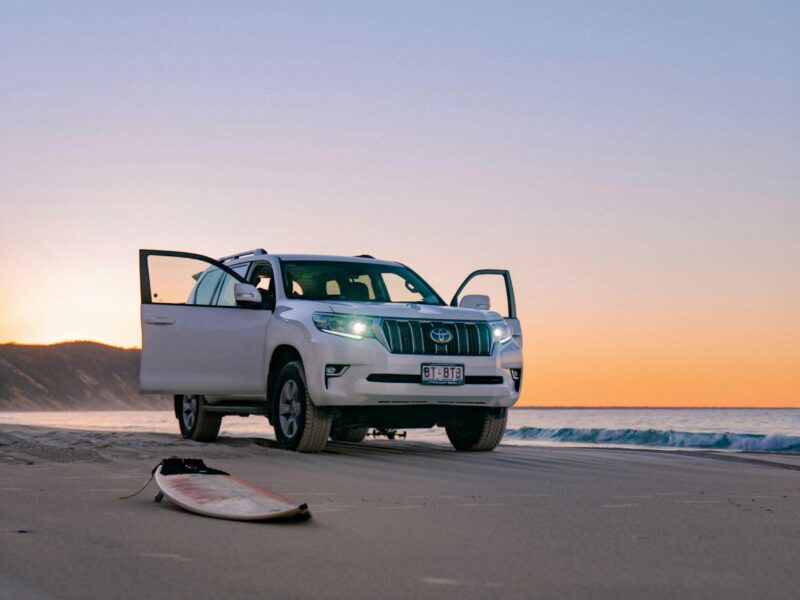- Introduction
- Definition of Auto Insurance
- Importance of Having Adequate Coverage
- Mandatory Coverage: Liability Insurance
- Explanation of Liability Coverage
- State Requirements and Minimums
- Collision Coverage
- What Collision Coverage Includes
- Instances When Collision Coverage is Beneficial
- Comprehensive Coverage
- Comprehensive Coverage Explained
- Protection Against Non-Collision Events
- Uninsured and Underinsured Motorist Coverage
- Why it’s Crucial
- How it Protects You
- Personal Injury Protection (PIP)
- Overview of PIP
- Benefits of Having PIP
- Medical Payments Coverage
- Complementary Coverage to PIP
- How it Differs from PIP
- Gap Insurance
- Purpose of Gap Insurance
- Situations Where Gap Insurance is Useful
- Rideshare Insurance
- Addressing the Needs of Rideshare Drivers
- Coverage Gaps Without Rideshare Insurance
- Classic Car Insurance
- Unique Features of Classic Car Insurance
- Qualifications for Classic Car Insurance
- Usage-Based Insurance (UBI)
- How UBI Works
- Benefits and Drawbacks
- Choosing the Right Coverage for You
- Assessing Personal Needs and Risk Tolerance
- Balancing Premium Costs and Coverage
- Discounts and Savings
- Common Discounts Available
- Strategies to Lower Premiums
- Reviewing and Updating Your Policy
- Importance of Regular Policy Reviews
- How Life Changes Affect Coverage Needs
- Conclusion
- Recap of Different Coverage Types
- Encouragement to Assess Individual Needs
Introduction
Auto insurance is more than just a legal requirement– there are different types of auto insurance coverage – it’s a safety net that protects you and your vehicle in times of unexpected events. Navigating the world of auto insurance can be overwhelming, but understanding the different types of auto insurance coverage available is crucial in ensuring you have the right protection. Let’s delve into the various auto insurance options and find out which one suits you best.
Mandatory Coverage: Liability Insurance
The foundation of auto insurance lies in liability coverage. This type of insurance is mandatory in almost every state and covers the costs associated with injuries and property damage you may cause to others in an accident. It’s the baseline, and understanding state requirements and minimums is the first step in building your insurance policy.
Collision Coverage
What happens if your car collides with another vehicle or object? That’s where collision coverage steps in. It covers the repair or replacement costs of your vehicle, regardless of fault. While not mandatory, collision coverage can be immensely beneficial, especially if you have a newer car or if you’re financing it.
Comprehensive Coverage
Comprehensive coverage takes things a step further. It protects your vehicle from non-collision events such as theft, vandalism, natural disasters, or hitting an animal. If you want comprehensive protection beyond accidents, this is the coverage to consider.
Uninsured and Underinsured Motorist Coverage
Not everyone on the road follows the rules, and that’s where uninsured and underinsured motorist coverage becomes crucial. It steps in to cover your expenses if you’re in an accident with someone who either has no insurance or lacks sufficient coverage.
Personal Injury Protection (PIP)
Personal Injury Protection, or PIP, is designed to cover medical expenses for you and your passengers, regardless of who’s at fault. It’s particularly important in no-fault states and can help with medical bills, lost wages, and even funeral costs.
Medical Payments Coverage
Similar to PIP but less comprehensive, medical payments coverage focuses solely on medical expenses. It can be an excellent addition, especially if you already have health insurance but want extra coverage for accident-related medical costs.
Gap Insurance
Driving a brand-new car or one with outstanding loan payments? Gap insurance bridges the gap between what your insurance covers and the actual cash value of your car, ensuring you’re not left with out-of-pocket expenses in the event of a total loss.
Rideshare Insurance
For those involved in ridesharing services like Uber or Lyft, standard auto insurance may not be sufficient. Rideshare insurance fills the gaps, providing coverage during periods when personal auto insurance might not apply.
Classic Car Insurance
Owning a classic car is a unique experience, and so is insuring one. Classic car insurance offers specialized coverage tailored to the needs of vintage vehicle owners, including agreed-upon value and restoration coverage.
Usage-Based Insurance (UBI)
As technology advances, so does the way insurers assess risk. Usage-Based Insurance (UBI) involves tracking your driving habits through telematics devices. Safe driving can lead to lower premiums, making it a popular choice for many.
Choosing the Right Coverage for You
Selecting the right coverage involves a careful assessment of your personal needs, risk tolerance, and budget. It’s about finding the right balance between premium costs and the level of protection you desire.
Discounts and Savings
Who doesn’t love discounts? Auto insurance providers often offer various discounts, such as safe driver discounts, multi-policy discounts, and discounts for safety features. Exploring these options can help you save significantly on your premiums.
Reviewing and Updating Your Policy
Life is dynamic, and so are your insurance needs. Regularly reviewing and updating your policy ensures that it aligns with your current circumstances. Life changes, such as getting married, having children, or changing jobs, can impact your coverage requirements.
Conclusion
In the intricate world of auto insurance, one size does not fit all. That’s why we have different types of auto insurance coverage. Each coverage type serves a specific purpose, and the right choice depends on your individual circumstances. Whether you prioritize comprehensive coverage, additional protection for passengers, or savings on premiums, understanding your options empowers you to make informed decisions.
Frequently Asked Questions (FAQs)
- Why is liability insurance mandatory?
- Liability insurance is mandatory to ensure that drivers can cover the costs of injuries or property damage they may cause to others.
- Do I need collision coverage if my car is old?
- While not mandatory, collision coverage can still be beneficial for covering repair or replacement costs, especially if the car is valuable to you.
- Is comprehensive coverage necessary for all drivers?
- Comprehensive coverage is optional, but it provides additional protection against non-collision events, making it valuable for many drivers.
- What does rideshare insurance cover?
- Rideshare insurance covers gaps in coverage that may occur when a driver is using their personal vehicle for ridesharing services.
- How often should I review my auto insurance policy?
- It’s recommended to review your auto insurance policy annually or whenever significant life changes occur to ensure it meets your current needs.




